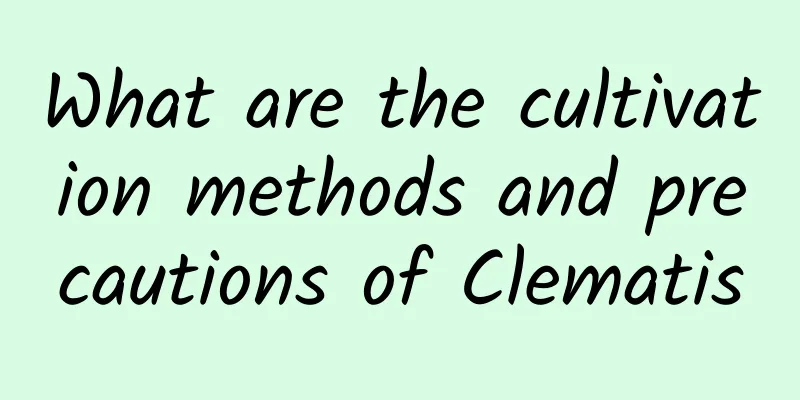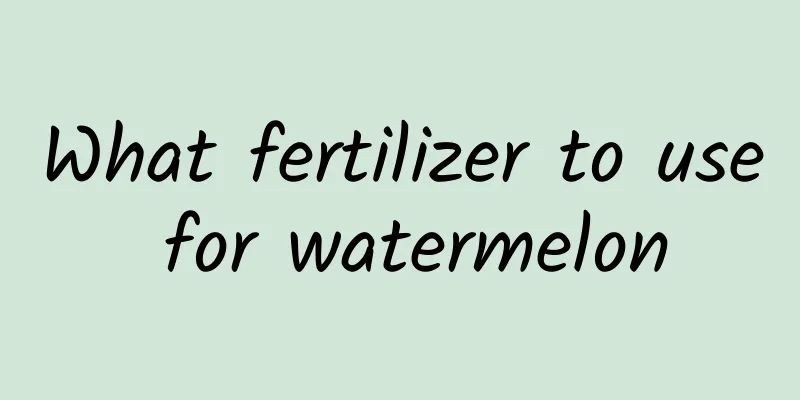What are the cultivation methods and precautions of Clematis

Clematis IntroductionClematis, also known as Clematis peony, gold-wrapped silver, mountain clematis, and Clematis, is a plant of the genus Clematis in the Ranunculaceae family. Clematis flowers grow solitarily in leaf axils and have no petals. They bloom in summer and the flowers are white. Common varieties include double-petaled clematis and stamen-petaled clematis. How to grow clematisClematis has a strong adaptability to temperature and can withstand temperatures as low as minus 20 degrees Celsius. The suitable growth temperature is between 15-25 degrees. It likes loose, fertile, well-drained and water-retaining alkaline soil. It likes the sun, but cannot tolerate direct sunlight. It needs to be shaded. When it is growing vigorously, fertilize once every 15 days or so. soilClematis likes alkaline soil. If you prepare the soil yourself, you can mix coconut husk, peat soil and perlite. This will have strong water permeability and is very suitable for the growth of clematis. You can also add some base fertilizer, but be careful not to touch the young roots to avoid burning the roots. illuminationClematis is a light-loving plant and is suitable for growing in an environment with sufficient light, which is conducive to the formation of flower buds. If the light intensity is not high, it is best to ensure that the clematis has about six hours of light per day. When the sunlight is strong, pay attention to shading, otherwise it is easy to get burned. WateringThe roots of Clematis are fleshy and cannot tolerate waterlogging. Excessive watering can easily cause root rot, and insufficient watering will cause poor plant growth. Generally, watering two to three times a week in summer is sufficient. It is best to water in the summer evening to prevent root rot. Try to avoid splashing water on the flowers when watering. FertilizationClematis has just been bought and does not need to be fertilized. It requires a large amount of fertilizer during the growth period, but it should not be overfertilized. Sufficient base fertilizer should be applied before potting. Some decomposed diluted cake fertilizer can be applied at ordinary times. Some phosphorus and potassium fertilizers can be applied before flowering. Fertilization needs to be stopped when the temperature is high in summer. pruneThere is no fixed pruning time for Clematis. Generally, the plant will enter a dormant state in autumn and winter. It is best to prune it at this time. The seedlings can be cut off, leaving the branches with good growth. Things to note when growing clematis1. Support: You need to find a good support for the clematis. You can attach the support according to your wishes, which will guide its growth trajectory. 2. Pests and diseases: If pests and diseases occur during the maintenance of Clematis, it is necessary to remove the diseased plants in time, ventilate frequently, do not place it in a closed environment, trim off the diseased leaves or withered parts, and spray the corresponding pesticides to prevent more infection. |
<<: Can tea water be used to water succulents?
>>: What are the cultivation methods and precautions of red plum blossoms?
Recommend
Holly cultivation methods and precautions
Farming methods soil Holly prefers fertile soil a...
Primrose cultivation methods and precautions
Primrose is a flower that blooms at the turn of w...
Can you plant flowers with coal ash?
1. Is it possible? Coal ash is what is left after...
Tips for gardening: Environmentally friendly pest control methods for gardening at home
1. Scientific management to improve the ability o...
Where does Cistanche grow? Where can Cistanche grow?
Cistanche deserticola is known as the "deser...
Cultivation methods and precautions of Gaoyue Rhododendron
1. Breeding methods 1. Growth habits Since this f...
Can Mimosa be placed indoors?
1. Can it be placed indoors? It is best not to pl...
What to do if the Anthurium flowers turn black and wither
1. Replenish water in time (1) Specific reason: A...
The efficacy and function of purple leaf sorrel
effect The efficacy of purple-leafed Oxalis is ma...
How to care for large-leaf cymbidium orchids
Cymbidium orchid growth conditions For large-leaf...
What to do if lucky bamboo grows too tall
1. No processing required Sometimes, the plant ju...
How to care for colorful roses
Colorful rose growth conditions The colorful rose...
Chrysanthemum planting method and time when is the best time to plant
Suitable time for planting chrysanthemums The bes...
A quick and dirty way of reproduction
The Gordian knot method of reproduction: sowing T...
How often should I water my dragon beard tree?
1. Different seasons It likes a humid environment...









